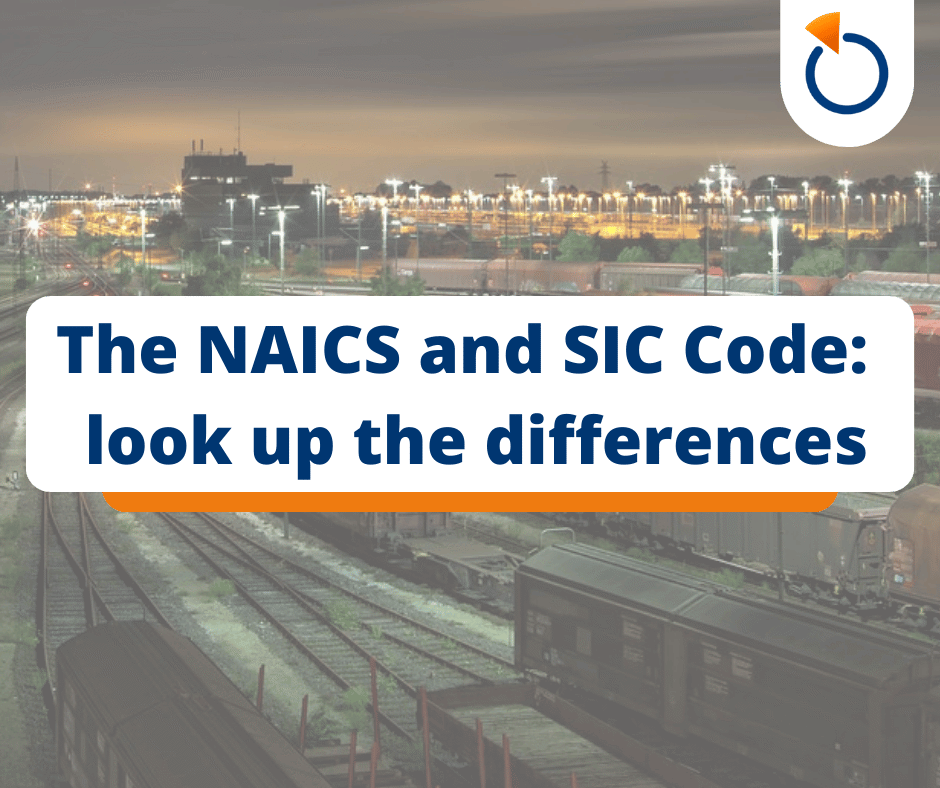
In the U.S.A. the NAICS and SIC code are two business classification systems with an important role in categorizing businesses for various purposes. Let’s delve into it to understand their differences and their impact businesses of industry.
What does SIC mean and represent?
SIC (Standard Industrial Classification), is a system developed in the United States in the 1930s to classify establishments by the type of activity they engage in.
There will be no further revisions of the SIC, which was last updated in 1987 and replaced by NAICS ten years later. Nevertheless, it is possible that organizations, states and local agencies are continuing to use the SIC for their own purposes.
The SIC CODE consists of four digit numbers that group sectors into a hierarchy of subcategories with increasing detail of product or type of business and are listed in the records of the Electronic Data Gathering, Analysis, and Retrieval system (EDGAR).
These codes are also used in the Division of Corporation Finance as a basis for assigning review responsibility for the company's filings.
What is the NAICS Code?
The NAICS code stands for the North American Industry Classification System. It was developed as the standard for the Federal statistical agencies in classifying business establishments for the collection, presentation and analysis of statistical data related the U.S. business economy.
Adopted in 1997 to replace the SIC system was initially developed in the United States (U.S. Economic Classification Policy Committee) and then revised by Canada (Statistics Canada and Mexico (Mexico's Instituto Nacional de Estadistica y Geografia – INEGI)
What are the differences between the NAICS Code and SIC Code?
As we have described NAICS (North American Industry Classification System) and SIC (Standard Industrial Classification) are both systems used to categorize industries, but they have several differences. We have divided in some categories:
- Scope
NAICS is used in the United States, Canada and Mexico for statistical purposes. It is based on a production-oriented concept. The main objective is to facilitate analyses on the economic environments of the three North American countries. It was developed to provide a more detailed and comprehensive classification of industries, including emerging sectors that were not covered by SIC.
The latter has less details with respect to the NAICS encoding structure, covering for a smaller amount of industries and lacking specificity in certain area. It could limit its usefulness for certain types of analysis, especially in modern and rapidly changing industries.
- Hierarchy
NAICS organizes industries into a hierarchical structure with a five-digit code system. It starts with broad sectors and then further divides industries into subsectors, industries, and national industries. SIC also organizes industries hierarchically but with a four-digit code system. It typically includes divisions, major groups and industry groups but it may not offer the same level of detail as NAICS.
- Coverage
NAICS covers a broader range of industries and is regularly updated to reflect changes in the economy and emerging sectors. SIC covers fewer industries compared to NAICS and may not accurately represent newer industries or changes in the economy over time.
- Update
NAICS Codes are revised and updated once every 5 years to reflect changes and innovations in the economy and emerging industries one. SIC has been largely replaced by NAICS in the United States. It is no longer updated, and NAICS is the standard classification system used for economic analysis and reporting.
What about European classifications?
In Europe, NACE is the codification used to identify and distinguish economic activities of companies. NACE can be used as parameter for market analysis in some European countries such as Austria, Switzerland and Germany.
You can look up NACE categories on Margo, our marketing intelligence platform.
Subscribe to Margo’s free trial and find the industrial classification in target for your business development.